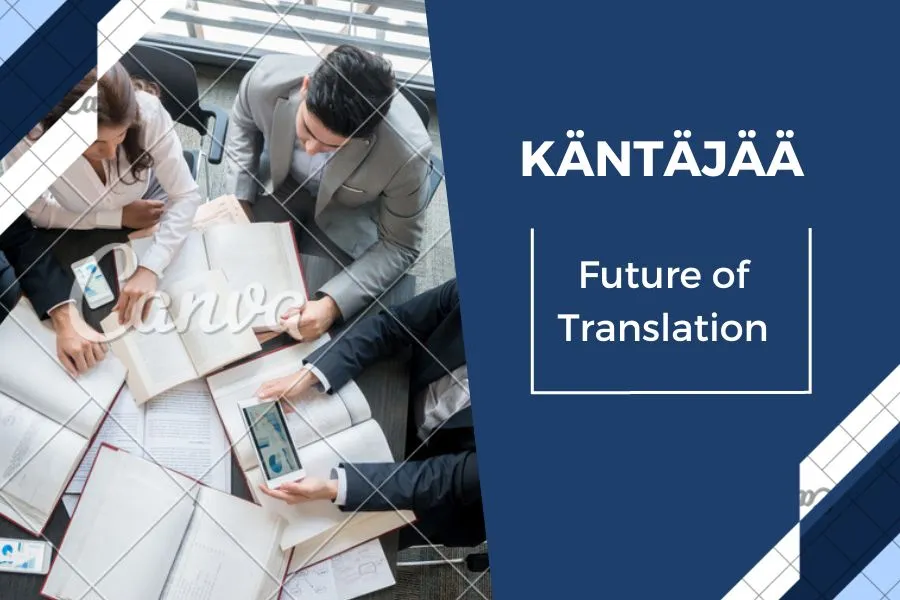Käntäjää, an innovative translation tool, has revolutionized the landscape of language translation technology. Developed as a state-of-the-art AI-driven program, it has garnered widespread attention for its efficiency, accuracy, and impact on multilingual communication. This article delves into the origins, functionalities, capabilities, challenges, and future prospects of Käntäjää, shedding light on its pivotal role in the realm of translation technology.
Origins and Development of Käntäjää
Käntäjää, a Finnish word for “translator,” traces its roots back to the intersection of artificial intelligence and natural language processing. It was conceptualized by a team of linguists, computer scientists, and machine learning experts aiming to create a cutting-edge translation tool that could bridge linguistic gaps seamlessly. The initial stages involved extensive data collection, algorithm development, and training models using neural networks to enable accurate and contextually relevant translations.
Functionality and Features of Käntäjää
The core functionality of Käntäjää lies in its ability to translate text across multiple languages with remarkable precision. Leveraging neural machine translation, it analyzes vast datasets to comprehend nuances, idiomatic expressions, and contextual meanings within sentences. Its adaptive learning mechanisms continually refine the translation quality, ensuring improved accuracy over time. Furthermore, Käntäjää supports various formats, including documents, websites, and multimedia content, enhancing its versatility.
Advantages and Impact on Translation Industry
The advent of Käntäjää has significantly impacted the translation industry. Its rapid and accurate translations have streamlined multilingual communication for businesses, educational institutions, and individuals worldwide. It has reduced turnaround times for translation projects, enabling faster global expansion for companies. Additionally, Käntäjää‘s cost-effectiveness has made professional-grade translation accessible to a broader audience, fostering cross-cultural interactions and knowledge exchange.
Challenges and Limitations
Despite its advancements, Käntäjää encounters challenges inherent in language translation. Contextual ambiguities, idiomatic expressions, and cultural nuances often pose hurdles for accurate interpretations. Certain language pairs may yield less precise translations compared to others due to variations in grammar, syntax, or vocabulary. Moreover, ensuring data privacy and maintaining ethical standards in handling sensitive information remain ongoing concerns in the development and usage of Käntäjää.
Ethical Considerations and Responsible Use
As with any AI-driven technology, ethical considerations are paramount in the development and utilization of Käntäjää. Preserving the integrity of translated content, respecting cultural sensitivities, and avoiding biases in translations are crucial aspects. Ensuring transparency about the use of AI in translation and providing avenues for human oversight to rectify potential errors is essential. Upholding ethical standards safeguards against misinformation and preserves the authenticity of translated content.
User Experience and Feedback
The user experience forms a significant aspect of Käntäjää‘s evolution. Continuous user feedback plays a pivotal role in refining the tool’s performance. Users’ experiences and suggestions contribute to the enhancement of its algorithms, user interface, and language accuracy. This iterative process of feedback integration facilitates ongoing improvements, ensuring that Käntäjää evolves to meet the diverse needs and expectations of its users.
Future Prospects and Evolution
The future holds promising prospects for Käntäjää as advancements in AI and machine learning continue to unfold. Further refinements in neural network architectures, enhanced language models, and increased computational capabilities will likely lead to even more accurate and contextually sensitive translations. Integrating Käntäjää with other emerging technologies, such as augmented reality or voice recognition, could expand its applications into new domains, enhancing global communication and accessibility.
Conclusion
Käntäjää stands as a testament to the remarkable advancements in translation technology, reshaping how individuals and organizations communicate across linguistic barriers. Its evolution from a concept to a sophisticated AI-powered translator underscores the relentless pursuit of innovation in the realm of language translation. While challenges persist, the continuous development and responsible use of Käntäjää hold the promise of fostering greater understanding and connectivity in our increasingly diverse and interconnected world.


